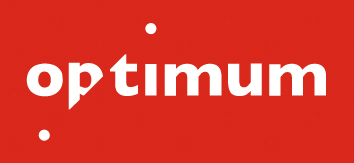Nine Twenty Engineering & Manufacturing Director, Karen Stewart, will be hosting regular online industry updates including hints & tips for candidates and clients across the Engineering & Manufacturing sector and beyond.
In this 2nd edition, Karen met with Lee Ann Healy, Managing Partner of Optimum PPS who specialise in delivering business and system change projects in the manufacturing, engineering and distribution sectors. The Optimum team has recently completed a number of Supply Chain Optimisation projects, and Karen was interested to see what insights and learning points they could share.


1. Why should businesses consider Supply Chain Optimisation projects?
It’s a business critical area. Driving for cost savings and service improvements ensure businesses survive and thrive. From a cost perspective, supply chain makes up a large portion of an organisation’s cost base and working capital. From a service perspective, it might sound a bit dramatic, but for some businesses failure to deliver to a customer can be the beginning of the end.
2. How do you approach a Supply Chain Optimisation project?
As with all our projects, we take a holistic approach across People, Processes and Systems to get maximum business results. A lot of companies often equate Supply Chain Optimisation with highly disruptive and risky projects such as redesigning your entire distribution network, but there can be big benefits from short term, low risk initiatives too. Our value discovery exercise helps drive out an improvement roadmap with a pragmatic approach to implementing change.
3. What are some of the process improvements you’ve implemented?
Getting their customers on board with forecasting. Working with the customers to improve their forecasting processes - help them to help you.
Supply chains are getting more complicated and sophisticated these days. But often it’s the simple things that get overlooked, or just get out of kilter.
So things like optimising the physical layout of the warehouse – get back to basics and walk the floor. Walking a product from machine to door often highlights the ‘spaghetti’ that’s happening. Look at what’s actually happening, versus what’s supposed to be happening. We did this recently on a Supply Chain Management system implementation project and it had a big impact (even though the teams were adamant that it was already optimised!). This wasn’t really anything to do with the actual system implementation, but there’s not much point having a state of the art system if the basic processes aren’t optimised.
Making processes and KPIs highly visible can help drive up performance. It doesn’t have to be a high-tech solution. Sometimes just getting people to write up their own KPIs manually on a board each day / week makes them focus on their performance more. Simple techniques like that can also help people work together more and stop things falling between the gaps.
4. How can a technology solution further improve things?
Supply chain optimisation software can really help take things to the next level. We tend to advise on taking a phased or layered approach. So instead of trying to implement supply chain planning, demand planning, S&OP planning, production planning etc, etc all at once – get one area implemented and optimised and then introduce the next. The software these days is really comprehensive, not to mention complicated with huge amounts of data and algorithms to manage – it takes a bit of time and patience to get it working right for your business but once you get it bedded it in can make a huge difference. It also often needs integrated and interfaced with other business systems such as the core ERP or business intelligence so it needs robust project and solution management across the piece.
5. And what about the people aspects?
It’s key to get ownership and accountability at the right level. Supply chain optimisation often results in people having to do things differently. Sales teams, planning teams, and production teams have to work together differently. And we all know people don’t like change, so it usually needs to be driven and supported from the senior team or it just won’t happen.
And although I mentioned about supply chain management software often being pretty complicated – it’s often not actually the system that’s the root of any issues. It usually comes back to people and processes.
----------------------------------------------------------------------------------------
If you want to find out more about the services that Optimum offer, call the Glasgow office direct on 0141 221 3257 or visit the website: https://optimumpps.co.uk
If you are interested in discussing either hosting an industry specific seminar or sharing your knowledge and experience in a similar way to this blog, contact Karen Stewart on kstewart@weareninetwenty.com or call the office directly on + (141) 231 1260.
Follow Nine Twenty on LinkedIn to make sure you never miss out on our company updates: https://www.linkedin.com/company/ninetwenty